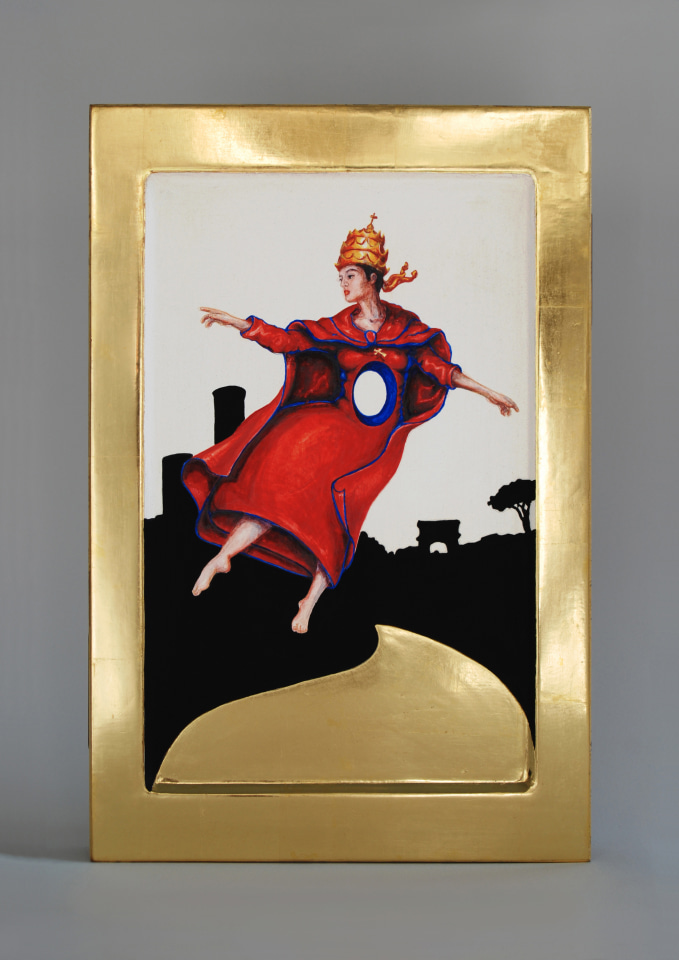Pope Joan, Patron Saint of Feminists, 2023
Icon board water gilded with 24ct gold, Sennelier tempera & black bole
30 x 20 cm
11 3/4 x 7 7/8 in
11 3/4 x 7 7/8 in
Wassall’s practice is steeped in research and discovery, leading her to create works that are both surprising and somehow familiar. She often explores feminist ideas alongside broader issues of inequality,...
Wassall’s practice is steeped in research and discovery, leading her to create works that are both surprising and somehow familiar. She often explores feminist ideas alongside broader issues of inequality, race, class, and religion. She describes the exquisite jewel like piece ‘Pope Joan, Patron Saint of Feminists’ as a contemporary take on icon painting. Pope Joan, the legendary female pontiff, supposedly reigned under the title of John VIII for just over 25 months, from 855 to 858 AD.
It is said she gave birth during a religious procession and was subsequently stoned to death. Wassall depicts her patron saint of feminists floating above a golden road, with a symbolic hole in her stomach.
Pope Joan is rejected as fiction by the Vatican and academics disagree as to whether she existed. Some argue she was invented to discredit the Catholic Church, whilst the Australian archaeologist Michael Habicht, found evidence of two different Pope John VIIIs represented on coins from different decades. One coin is from 856- 858, which he argues commemorates the first Pope John VIII or Pope Joan (as she was later called). The second coin is from 875, which commemorates the second Pope John VIII.
Two establishments, the Church (faith) and archaeology (social science/anthropology), have their own beliefs about herstory.
Wassall’s ‘Pope Joan, Patron Saint of Feminists’ applies the conventions of religious icon painting. However, the sky is left as bare gesso, atypical for an icon. Her reasoning is that this is not a ‘blue sky’ picture, and the story remains unresolved. The bare gesso also provides a contemporary take on a tradition of icon painting; it should symbolise a story rather than tell it.
It is said she gave birth during a religious procession and was subsequently stoned to death. Wassall depicts her patron saint of feminists floating above a golden road, with a symbolic hole in her stomach.
Pope Joan is rejected as fiction by the Vatican and academics disagree as to whether she existed. Some argue she was invented to discredit the Catholic Church, whilst the Australian archaeologist Michael Habicht, found evidence of two different Pope John VIIIs represented on coins from different decades. One coin is from 856- 858, which he argues commemorates the first Pope John VIII or Pope Joan (as she was later called). The second coin is from 875, which commemorates the second Pope John VIII.
Two establishments, the Church (faith) and archaeology (social science/anthropology), have their own beliefs about herstory.
Wassall’s ‘Pope Joan, Patron Saint of Feminists’ applies the conventions of religious icon painting. However, the sky is left as bare gesso, atypical for an icon. Her reasoning is that this is not a ‘blue sky’ picture, and the story remains unresolved. The bare gesso also provides a contemporary take on a tradition of icon painting; it should symbolise a story rather than tell it.
